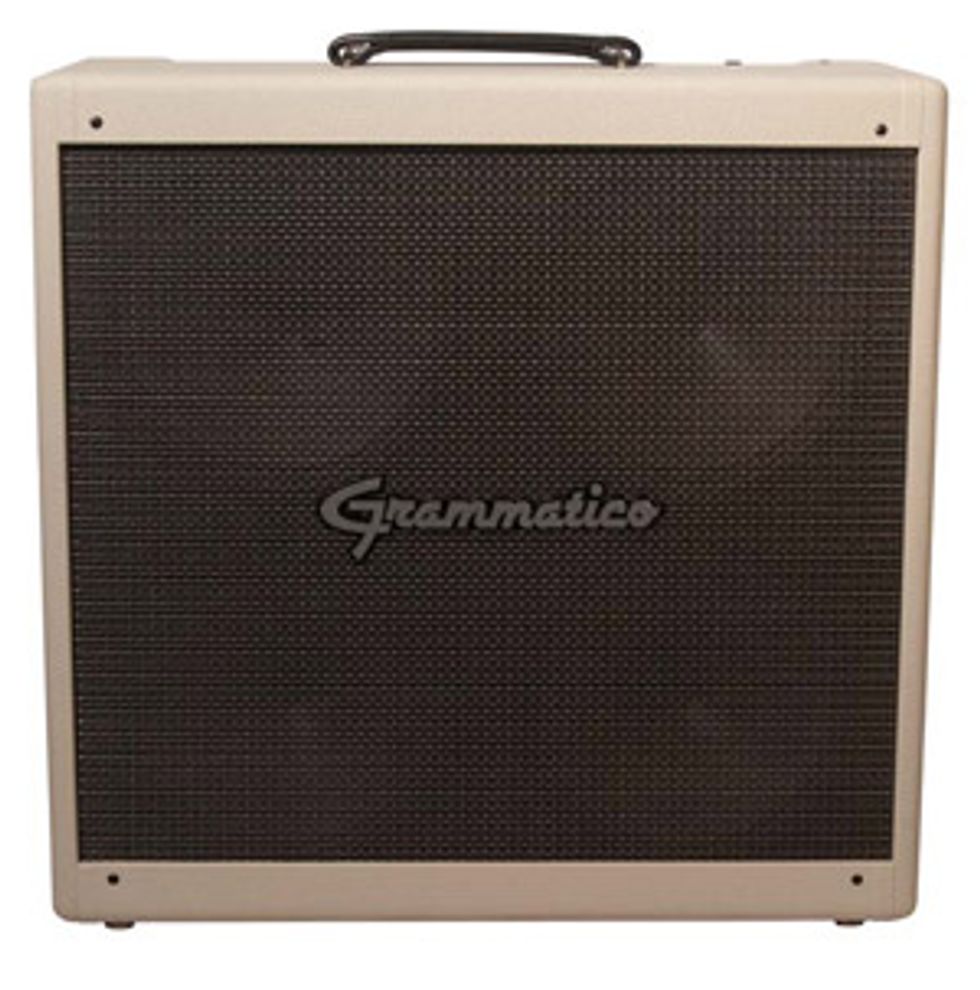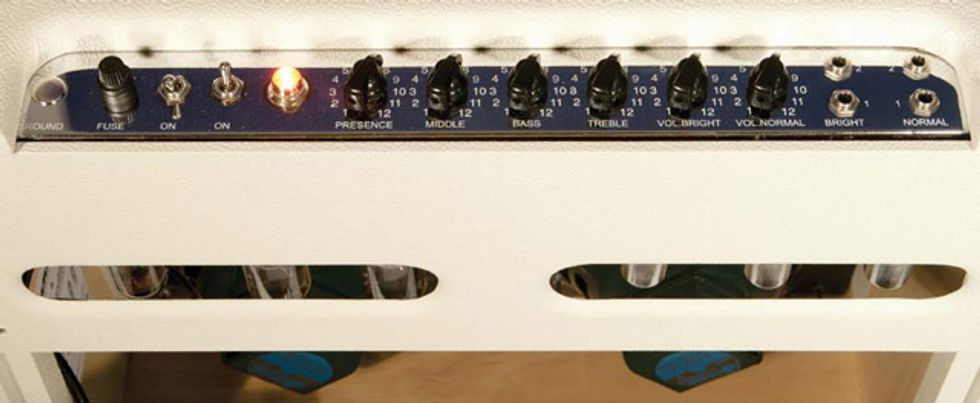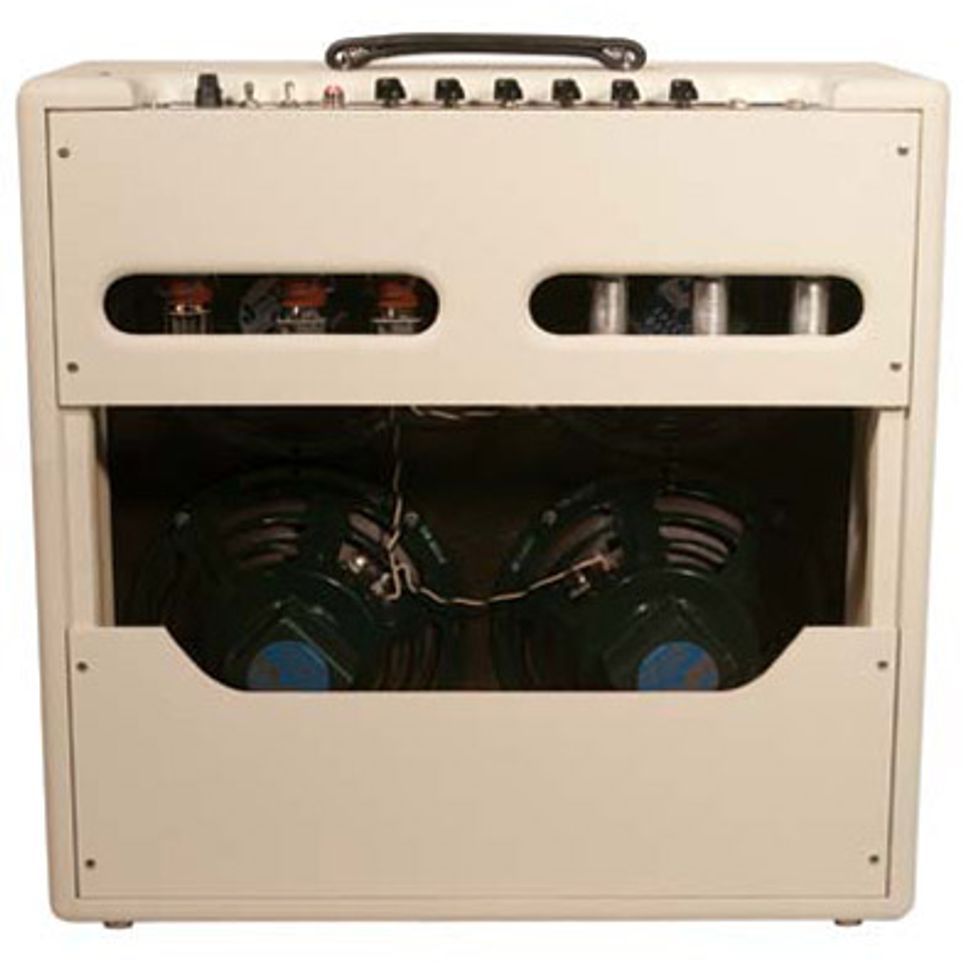
Leo Fender may have been a genius, but his legacy has benefitted from more than a few happy accidents. Consider the Fender Bassman: This tweed beast was never intended for guitarists—it surfaced in 1952 to go along with the Fender Precision Bass. But somewhere down the road, a budding guitarist plugged his 6-string into a Bassman and a classic guitar amp was born.
Leo’s great tweed Bassman circuit (known far and wide by amp nerds as the 5F6A) was such a success it has inspired imitators and homages ever since. No less than Jim Marshall launched his amplification empire with his take on a ’59 Bassman—the JTM45—and 50 years later, amp builders are still plying those waters.
Grammatico Amps is one of the most impressive of these and the Austin-based outfit has created a groundswell of praise for it sole product, the Bassman-inspired Kingsville. It was good enough to get the attention of Bassman-champion Jimmie Vaughan, who purportedly wrote John Grammatico a check after playing a few runs through a Kingsville. We were, as it turns out, similarly impressed.
Familiar Territory
The Kingsville’s top-panel control layout
will be familiar to anyone who has ever
used a tweed Bassman. It’s a simple control
set—presence, middle, bass, treble, bright
volume, and normal volume, all on a scale
of 1 to 12—though it takes a little adjustment
if you’re more accustomed to simpler
blackface-style control arrays.

Each channel (bright and normal) has two separate inputs, and the second is ostensibly better suited for instruments with higher output. Aside from the tone controls, there’s a threaded orange indicator jewel, an on/off switch, a standby switch, and an easy-access fuse holder. Curiously, there’s also a spot for a ground switch, but this is purely for the cosmetically nostalgic— it’s not actually hooked up.
John Grammatico’s exacting approach to building the Kingsville is impressive. When he tired of sifting through signal capacitors that weren’t up to his standards, he had his own made in the USA. And the entire circuit is an amp tech’s dream with flawless handwiring and snug, but accessible components. The 45-watt power section is driven by two Tung-Sol 5881 tubes, and the amp offers three Electro-Harmonix 12AX7s in the preamp and a 5AR4 for the rectifier.
For all of the vintage exactitude that goes into the Kingsville, the amp deviates from tweed styling dogma. Instead, the finger-jointed solid pine cabinet is dressed in a crème-colored vinyl that bridges the tweed and early piggyback eras. And while the entire amplifier weighs in at a svelte 42 pounds, the craftsmanship makes the amp feel exceptionally rugged and solid. You get the sense no expense was spared building these regal beasts, and they’ll hold up for years with regular maintenance.

An Agreeable Sort
One of the most beautiful aspects of the
original Bassman is that it works well with
just about any guitar, and here the Kingsville
doesn’t disappoint. With a Stratocaster
running into the normal channel and the
volume up to about 8, you can nail the sultry
and powerful tones of “Voodoo Chile.”
Kick it up to 10 and you’re flirting with the
“Slight Return” territory.
The Kingsville’s build quality shines at these loud volumes. It’s noise and rattle free and rings with harmonic clarity. Single-coils at these levels generate that distinct vintagetube crunch that’s bristling with attitude and authority. Sharp punches at a Telecaster will send you into smoldering Keith Richards territory, and you can access Page’s slicing single-note lead tones by stepping up your pick attack.
If you favor humbuckers, you need not fear muddiness. A tweak of the treble and presence knobs will clear up the output from a Les Paul, and rolling down the amp volume helps accommodate the Gibson’s higher output while communicating a blistering blues twang. Using the bright channel for humbuckers gets you even further out front of the low end without sacrificing the substantial bass voice that’s such a vital part of the Bassman sound. It’s a great texture for playing against a bass.
Ratings
Pros:
Superb craftsmanship. Very flexible and
nicely voiced eQ. nice touch of blackface-style
openness on top of tweed tone.
Cons:
Price might be beyond reach for a lot
of working musicians.
Value:
Tones:
Build:
User Friendliness:
Street:
$2,500
Grammatico Amps
grammaticoamps.com
The Kingsville is a blast to drive into dirty zones, but its capacity for truly gorgeous cleaner tones is remarkable. Telecasters and Stratocasters demonstrated a complex, charismatic tone at just a third of full volume. The Kingsville is exceptionally responsive to picking dynamics, and this quality makes it an excellent choice for slide players.
The presence control is great for adding a touch of top-end brilliance once you dial in your EQ. This knob doesn’t simply add more treble like some presence controls, but seems to lend some air to a wide band of upper frequencies—perfect for adding body and authority to high notes.
Even though the Kingsville’s tone is distinctly tweed, the amp’s inherent compression is more musical than super squishy, giving the combo an openness that some tweeds lack. It even has a hint of blackface boominess that, when matched with the tight low-end of a tweed-style circuit, creates a subtle hybrid of vintage Fender-style tones.
The Verdict
If you’ve found yourself on a quest for
early rock ’n’ roll tone, you just can’t do
better than the Grammatico Kingsville.
Undeniable sound, a remarkable EQ, and
careful craftsmanship will surely impress
any vintage aficionado—on stage or in the
studio. The $2,500 price tag isn’t exactly
peanuts, but the handbuilt quality and
sense of craft really justifies it if you have
the coin. This is one case where you’re likely
to get what you paid for.







![Rig Rundown: Russian Circles’ Mike Sullivan [2025]](https://www.premierguitar.com/media-library/youtube.jpg?id=62303631&width=1245&height=700&quality=70&coordinates=0%2C0%2C0%2C0)

















